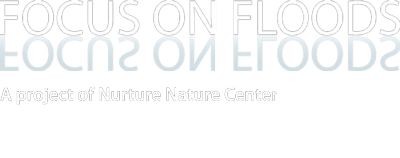Annotated Bibliography of Hazard and Flood-Related Articles
Morss, R.E. and M.H. Hayden, 2010: Storm surge and “certain death”: interviews with Texas coastal residents following Hurricane Ike. Weather, Climate, and Society, 2(3), pp 174–189.
This study assesses how Texas coastal residents perceived the risk associated with Hurricane Ike and subsequently how they made protective decisions. Interviews were conducted with 49 residents in Galveston and…
Keogh, D.U., A. Armando, S. Mushtaq, D. King, and M. Thomas, 2011: Resilience, vulnerability and adaptive capacity of an inland rural town prone to flooding: a climate change adaptation case study of Charleville, Queensland, Australia. Natural Hazards, 59, 699-723.
Hydrometeorological disasters, most notably floods, account for the majority of economic and livelihood losses in Australia. The objective of this study was to assess the vulnerability and coping/adaptation capacities of…
Kim, Y., and J. Kang, 2010: Communication, neighbourhood belonging and household hurricane preparedness. Disasters, 34(2), 470-488.
This study is motivated by individuals’ lack of preparedness before and during disasters despite the many government agencies designed to assist during natural disasters; in large part, the final decision…
National Weather Service, Service Assessment. “Southeast United States Floods, September 18-23, 2009.” May, 2010.
In September 2009, flash flood and areal flooding covered areas of Georgia, Alabama, and southeastern Tennessee after rainfall in the regions totaled 5-7 inches. These events led to 11 casualties….
Marx, S.M., E.U. Weber, B.S. Orlove, A. Leiserowitz, D.H. Krantz, C. Roncoli, and J. Phillips, 2007: Communication and mental processes: Experiential and analytic processing of uncertain climate information. Global Environmental Change, 17, 47-58.
Communicating the uncertainty inherent in climate change is a difficult task, especially since little is known about how groups of people understand uncertainty and make decisions based off of their…
Carsell, K.M., N.D. Pingel, and D.T. Ford, 2004: Quantifying the benefit of a flood warning system. Natural Hazards Review, 5(3), 131-140.
This paper describes a flood warning system that increases the mitigation time before the onset of a flood. This flood warning system consists of “hardware, software, plans and procedures, and…
Zaalberg, R., C. Midden, A. Meijnders, T. McCalley, 2009: Prevention, Adaptation, and Threat Denial: Flooding Experiences in the Netherlands. Risk Analysis. 29:1759-1778.
The main objective of this study was to better understand if previous flood experience by residents in the Netherlands led to more effective coping mechanisms during future floods. To address…
Knocke, E.T., and K.N. Kolivras, 2007: Flash flood awareness in Southwest Virginia. Risk Analysis, 27(1), 155-169.
Flash floods result in substantial damage, yet flash floods are seldomly looked at independently of other natural hazards. Currently, flood experts perceive the public’s risk perception very differently from how…
Grothmann, T. and Reusswig, F., 2006: People at risk of flooding: Why some residents take precautionary action while others do not. Natural Hazards. 38:101–120.
The overall goal of this paper is to understand self-protective behavior by the public in flood-prone areas. This paper is comprised of two main objectives. First, it set out to…
Zahran, S., S.D. Brody, W.G. Peacock, A. Vedlitz, and H. Grover, 2008: Social vulnerability and the natural and built environment: a model of flood casualties in Texas. Disasters, 32(4), 537-560.
This study assesses what physical and social factors increase the likelihood for fatalities during floods. The authors analyze 832 countywide floods in Texas from 1997-2001 with the aim of determining…
